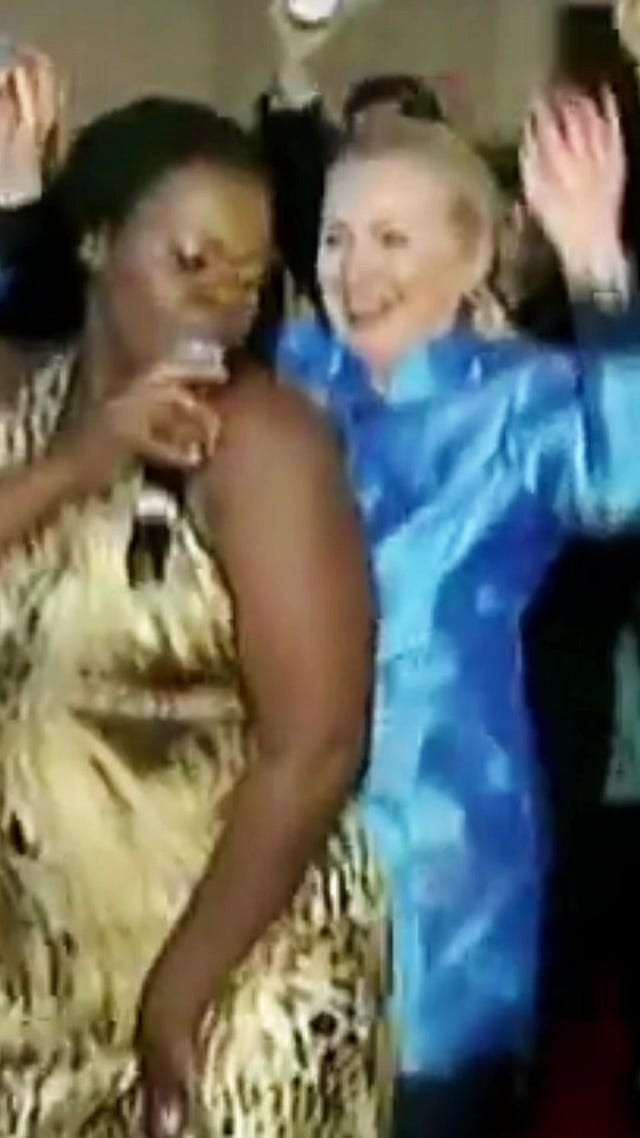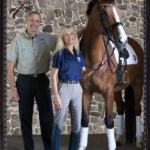Donald Trump. The name itself conjures a myriad of images, from business magnate to reality TV star, and, most notably, the 45th President of the United States. But beyond the boardroom and the political rallies, there’s another aspect of Trump that has captured public attention: his distinctive, and often discussed, Trump Dances. These aren’t choreographed routines; they are spontaneous, arm-flailing movements that have become as recognizable as his signature red tie. But why does Trump dance, and what does this tell us about him, especially when contrasted with his apparent reluctance to laugh?
This exploration into the phenomenon of trump dances will delve into the unusual nature of a politician so readily embracing dance, a form of expression often considered vulnerable in the high-stakes world of politics. We’ll look at why these trump dances stand out, what they might signify about Trump’s personality, and how they compare to other politicians’ carefully curated public images. Furthermore, we’ll ponder the intriguing contrast between Trump’s dancing and his seemingly rare laughter, unpacking the possible psychological and political implications of this peculiar dichotomy.
The Anatomy of a Trump Dance: More Than Just Moves
Let’s be clear: when we talk about trump dances, we’re not referring to ballroom elegance or hip-hop precision. The trump dance is a unique, almost improvisational performance. Characterized by jerky, arm-centric motions, typically above the waist, it’s a spectacle that’s hard to miss and even harder to forget. It’s become such a signature that athletes and online personalities have adopted the trump dance to celebrate victories or even for comedic effect, further cementing its place in popular culture.
Many have mistakenly linked the trump dance solely to the song “Y.M.C.A.”, but in reality, it’s a standalone move, deployed whenever the rhythm takes him, regardless of the musical backdrop. This consistency underscores that it’s not about the music, but about the moment and Trump’s expression within it.
 Donald Trump's signature dance move at a rally.
Donald Trump's signature dance move at a rally.
Even within the Trump family, the trump dance has become somewhat of a legacy. Videos of his granddaughter, Kai Trump, mimicking the moves highlight how deeply this peculiar dance has permeated public consciousness. It’s become more than just a dance; it’s a brand, an instantly recognizable physical signature.
Political Figures and Public Dancing: A Rarety Until Trump
Historically, politicians, particularly presidents, have been cautious about public displays of dance. While formal dances at inaugural balls or state dinners are customary, these are often perceived as obligatory formalities rather than genuine expressions of joy. In the modern, hyper-scrutinized media landscape, the risks of a politician appearing undignified or out of control through dance are amplified.
Consider the public perception of political figures. They are often expected to maintain an image of composure, seriousness, and unwavering control. Dancing, which inherently involves a degree of letting loose and abandoning oneself to rhythm, can be seen as antithetical to this carefully constructed persona. This is why seeing a president spontaneously break into dance, especially a dance as unconventional as the trump dance, is so striking.
While some might point to instances of past presidents engaging in dance, none have ever cultivated – or perhaps unintentionally stumbled upon – a signature dance move quite like Trump’s. The trump dance is unique not just in its style but in its consistent and seemingly uninhibited execution on the public stage.
The Dance vs. The Laugh: Unpacking a Paradox of Expression
The intrigue surrounding trump dances deepens when juxtaposed with observations about Trump’s laughter – or rather, the perceived lack thereof. Many commentators have noted Trump’s infrequent and seemingly strained laughter. This contrast presents a fascinating paradox: why is a figure so comfortable expressing himself through somewhat unconventional dance so reserved when it comes to laughter, another fundamental human expression of joy and release?
One theory posits that laughter, unlike solitary dancing, is often directed outwards. To laugh is to acknowledge something or someone else as humorous, diverting attention, even momentarily, away from oneself. In a personality seemingly geared towards self-promotion and constant attention, laughter, which is inherently a shared experience, might be perceived as a concession, a moment of relinquishing the spotlight.
Conversely, dancing, particularly the trump dance, while public, can be interpreted as a self-contained act of expression. It’s a performance, but one centered on the dancer. This self-focus aligns with the image of a figure who thrives in the limelight and maintains tight control over his public narrative.
However, this theory doesn’t fully reconcile with Trump’s apparent vanity and image consciousness. He meticulously cultivates his appearance, from his signature hairstyle to his aversion to appearing in shorts. Why then, would someone so concerned with image willingly engage in trump dances, which, while distinctive, are hardly graceful or conventionally flattering?
Perhaps the answer lies in the very shamelessness often attributed to Trump. A person unburdened by typical social inhibitions might not perceive the same risks in public dancing that other politicians do. The trump dance, in this light, becomes an extension of this persona: a bold, unapologetic expression of self, regardless of conventional norms or potential for ridicule.
AOC and the Politically Unconventional Dance
Interestingly, the discussion of politicians and dancing often brings up another prominent figure known for their public displays of dance: Alexandria Ocasio-Cortez (AOC). Her dancing, often seen in viral videos, stands in stark contrast to the carefully managed images of many mainstream politicians.
AOC’s dance moves, often more polished and intentionally referential (such as her Breakfast Club dance homage), project a different kind of authenticity. While Trump’s dance might convey a sense of ego-driven abandon, AOC’s dances often feel more playful, relatable, and even subtly rebellious against the staid expectations of political decorum.
The fact that both Trump and AOC, figures on opposite ends of the political spectrum and both considered outside the traditional political establishment, are associated with distinctive public dancing, suggests a potential link between unconventional political positioning and a willingness to embrace less conventional forms of public expression like dance.
Conclusion: The Enduring Enigma of Trump Dances
Ultimately, the phenomenon of trump dances remains a compelling and somewhat enigmatic aspect of Donald Trump’s public persona. It’s a unique form of self-expression that defies political norms, sparks curiosity, and perhaps offers a glimpse into the complex personality of a figure who has consistently broken molds. Whether interpreted as an act of shameless self-promotion, a genuine expression of joy (however jerky), or simply an instinctive response to music, trump dances have undeniably become a memorable and talked-about element of the Trump legacy. They serve as a reminder that even in the highly structured and often serious world of politics, there’s always room for the unexpected, and sometimes, the undeniably danceable.


